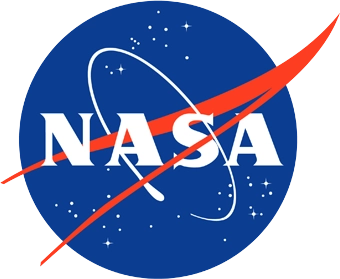JWST Solar System Science – Team
JWST Solar System Science – Team
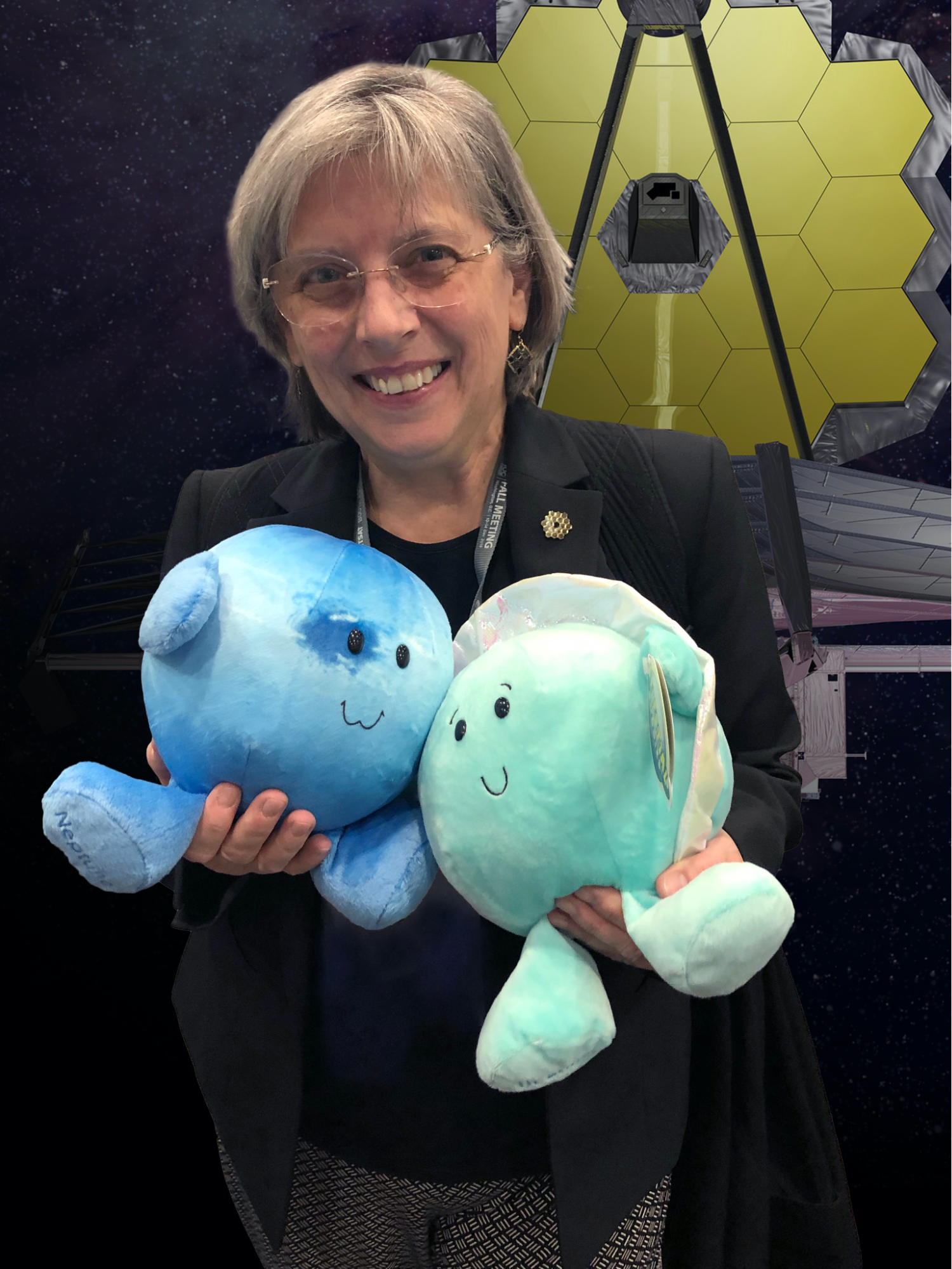
Heidi Hammel
Dr. Heidi B. Hammel is an Interdisciplinary Scientist for NASA’s James Webb Space Telescope, and her guaranteed observing time will be used to study a diverse array of Solar System targets. She received her undergraduate degree from MIT and her Ph.D. from the University of Hawaii. She is currently the Vice President for Science at AURA, a consortium that operates large astronomical observatories, including the Hubble Space Telescope, Gemini Observatory, and many more. Dr. Hammel primarily studies outer planets; she served on the imaging team for the Voyager 2 Neptune encounter, and has studied Uranus and Neptune extensively with Hubble and other facilities. She has been recognized for both her science and her work in public outreach, including the Sagan Medal and the San Francisco Exploratorium's Public Understanding of Science Award. In 2020, she received the American Astronomical Society’s Masursky Award for outstanding service to planetary science and exploration. Asteroid "1981 EC20" was renamed 3530 Hammel in her honor.
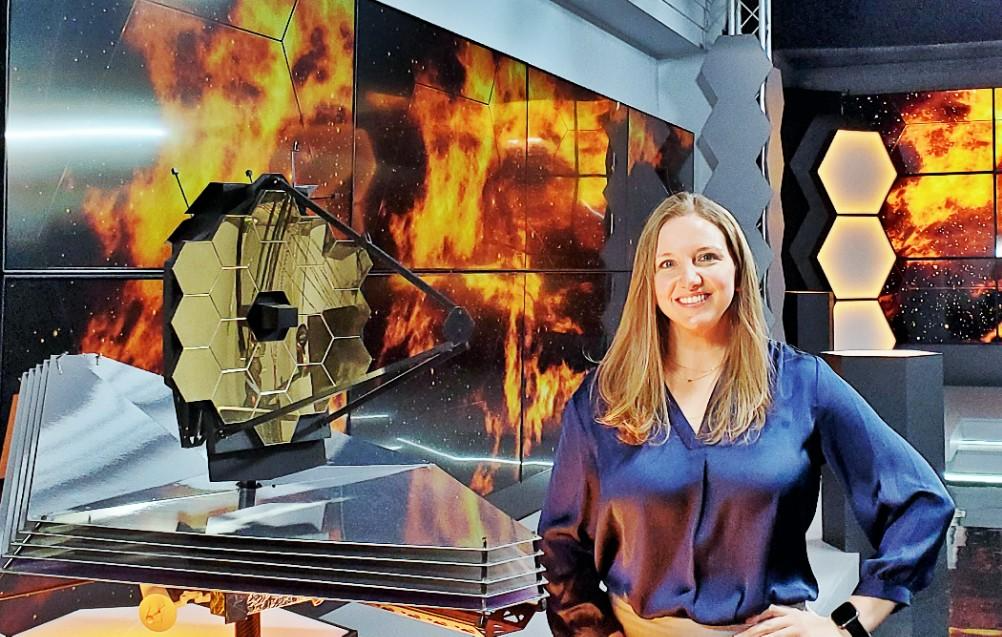
Stefanie Milam
Dr. Stefanie Milam is the deputy project scientist for planetary science for NASA’s James Webb Space Telescope and has been working on the project since 2012 to help establish this observatory as a planetary science resource, engage the community in future observations/preparation, and assist the project to ensure the capabilities for the observatory are suitable for solar system observations. She received her undergraduate degree in Chemistry from Kansas Wesleyan University and her PhD also in Chemistry from the University of Arizona. She is working and co-leading the JWST guaranteed time observation program of Heidi Hammel, even as the PI on two of those programs, as well as a co-investigator of a number of cycle 1 guest observing programs. Dr. Milam has a primary science interest in comets and interstellar objects and their connection to the solar system formation and evolution. Asteroid 40704 (1999 RO240) was named for Milam in recognition of her efforts to ensure solar system science with JWST were possible.
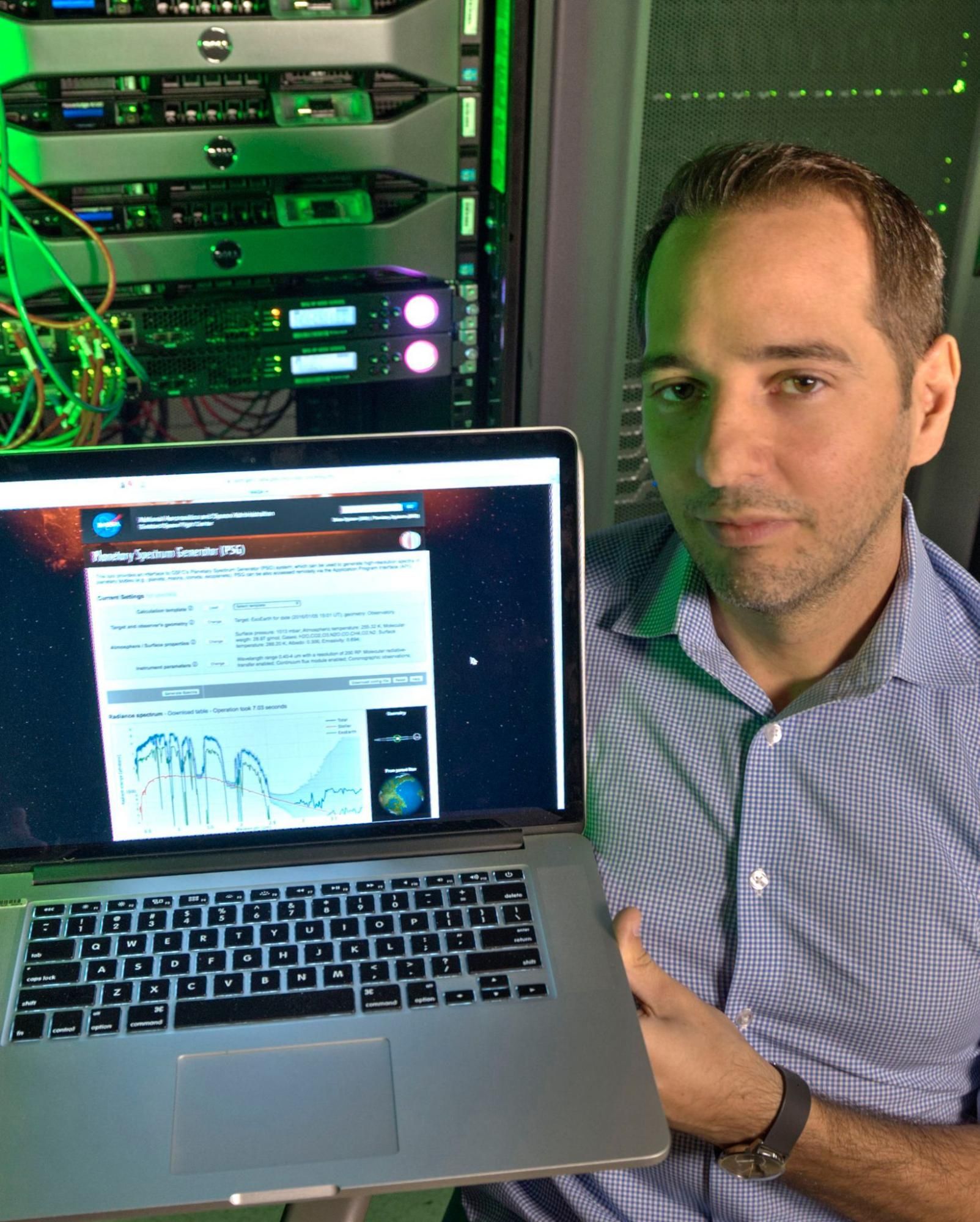
Geronimo Villanueva
Dr. Geronimo Villanueva is a planetary scientist at NASA-Goddard Space Flight Center who specializes in the search for organic molecules on Mars and on icy bodies. He is leading the Mars and Ocean Worlds studies for the James Webb Space Telescope (JWST) as part of Heidi Hammel’s solar system GTO program. Dr. Villanueva is the Principal Investigator (PI) of the Planetary Spectrum Generator (PSG), Co-PI of the Comet Interceptor Mission, and Co-Investigator of the ExoMars/TGO mission. He also serves as Science and Management advisor to several observatories, including Keck, NASA-IRTF and ALMA. In recognition to his work on small bodies, the International Astronomical Union (IAU) named minor planet '9724' after Dr. Villanueva, while the American Astronomical Society (AAS) in 2015 honored him with the Urey Prize (young planetary scientist of the year). Since completing his Ph.D. studies at the Max-Planck-Institute for Solar-System Research in Germany in 2004, Dr. Villanueva has participated in many projects at three space agencies, NASA, ESA (European Space Agency) and DLR (German Aerospace Agency), with a broad range of research experience in planetary, exploration and Space sciences. He is a strong advocate for Space Exploration and Astronomy, participating in numerous public outreach activities, and chosen as Science communicator by the US State Department and Shakira's foundation 'Pies Descalzos' to promote science in developing regions.
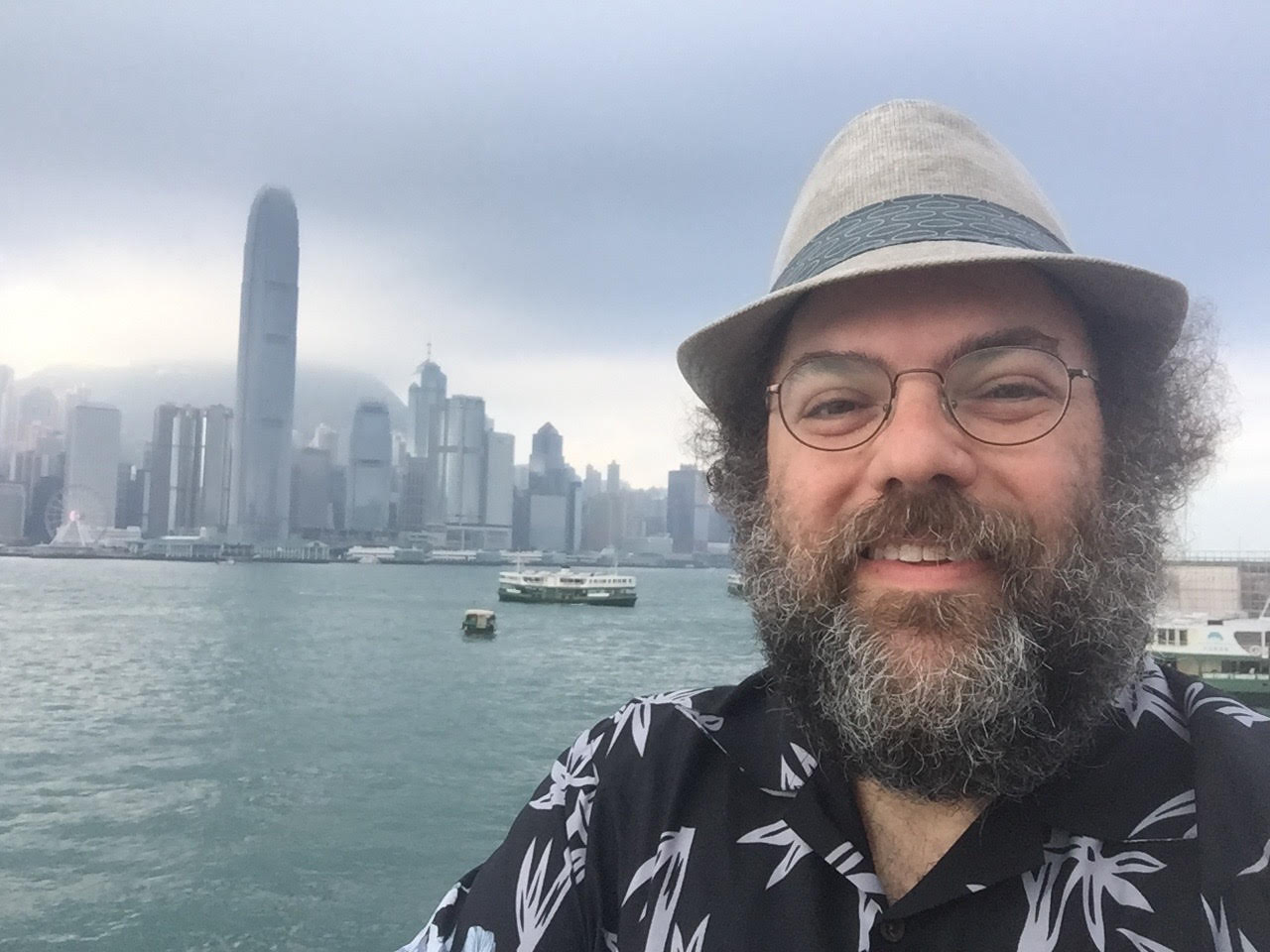
Andy Rivkin
Dr. Andy Rivkin is a Planetary Astronomer at the Johns Hopkins University Applied Physics Laboratory and an expert in asteroid science. He received his Ph.D. in Planetary Sciences from the University of Arizona in 1997, and is the Investigation Lead for the Double Asteroid Redirection Test, NASA’s first planetary defense test mission. Outside of planetary defense, Rivkin’s research centers on near-infrared spectroscopy and spectrophotometry of asteroids. In particular, he is interested in those asteroids that have evidence of water or organic materials in them, detectable in their infrared reflectance spectrum. This pursuit has led to studies of asteroids like 24 Themis, an asteroid in the outer belt on which water ice has been discovered -- a first among asteroids. He has a particular interest in the dwarf planet Ceres, and have produced several papers over the past decades detailing its unusual composition and variation across its surface. In addition to observational work, he has been active in the broader Near-Earth Object community, serving as a team member on several efforts to understand and report the impact hazard we face and how to lessen it, and leading a group reporting to NASA about the most important unknown factors related to human exploration of an asteroid. Asteroid 13743 was named Rivkin in recognition of his work in the field.
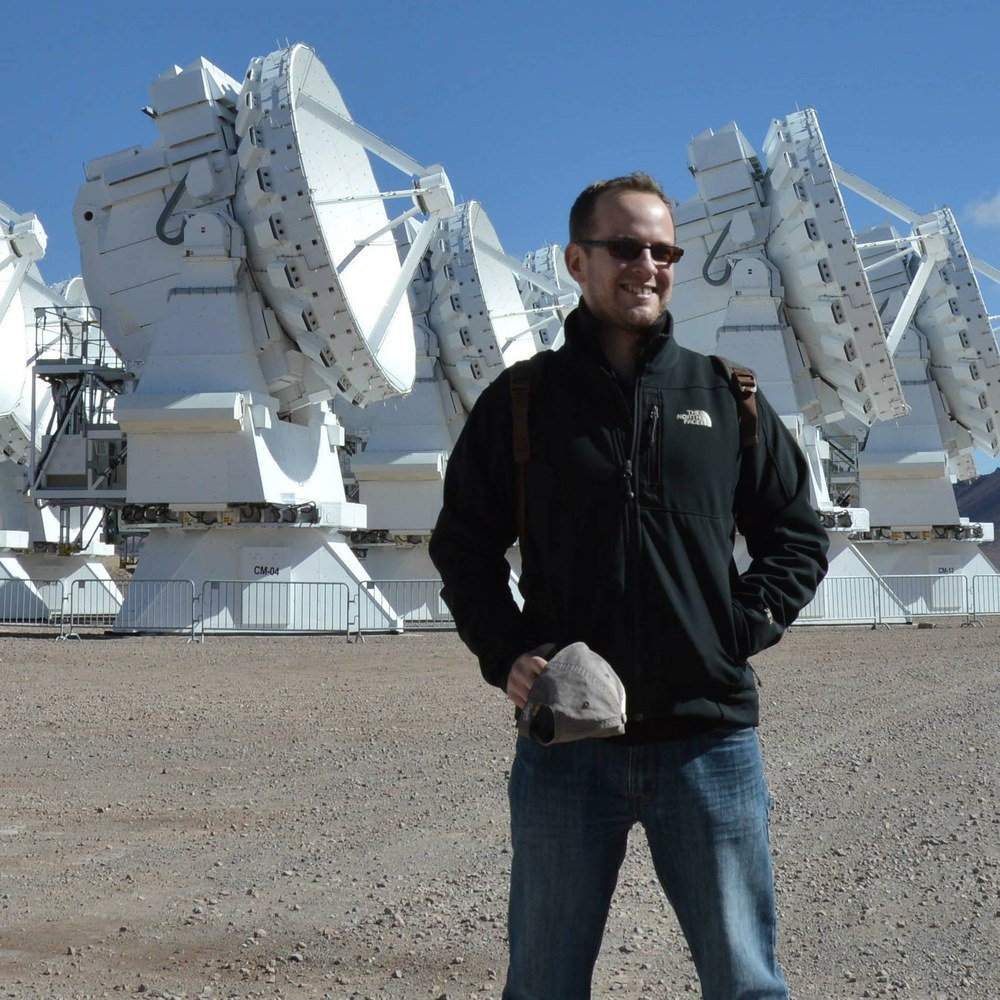
Leigh Fletcher
Dr. Leigh Fletcher is a Planetary Scientist specialising in the exploration of our Solar System’s giant planets via robotic spacecraft, ground-based observatories, and space telescopes. He is an Associate Professor in Planetary Sciences at the University of Leicester. He earned a Natural Science degree from Cambridge, a PhD in Planetary Physics from Oxford, and has since worked as a NASA fellow at the Jet Propulsion Laboratory and as a Research Fellow at Oxford. He held a Royal Society University Research Fellowship (URF) between 2013 and 2020, and was the recipient of the 2016 Harold C. Urey prize for outstanding achievements in planetary science by an early-career scientist, awarded by the Division for Planetary Sciences (DPS) of the American Astronomical Society. He is a team member for the Cassini mission to Saturn, the Juno and JUICE missions to Jupiter, and is a passionate advocate for future exploration of the distant Ice Giants. He currently leads a planetary atmospheres team at the University of Leicester, funded by the Royal Society, STFC, and the European Research Council. Leigh has led the development of the giant-planet atmospheres programme for JWST, using both MIRI and NIRSpec spectroscopy during Cycle 1. You can find out more about his research on Twitter and via his website.
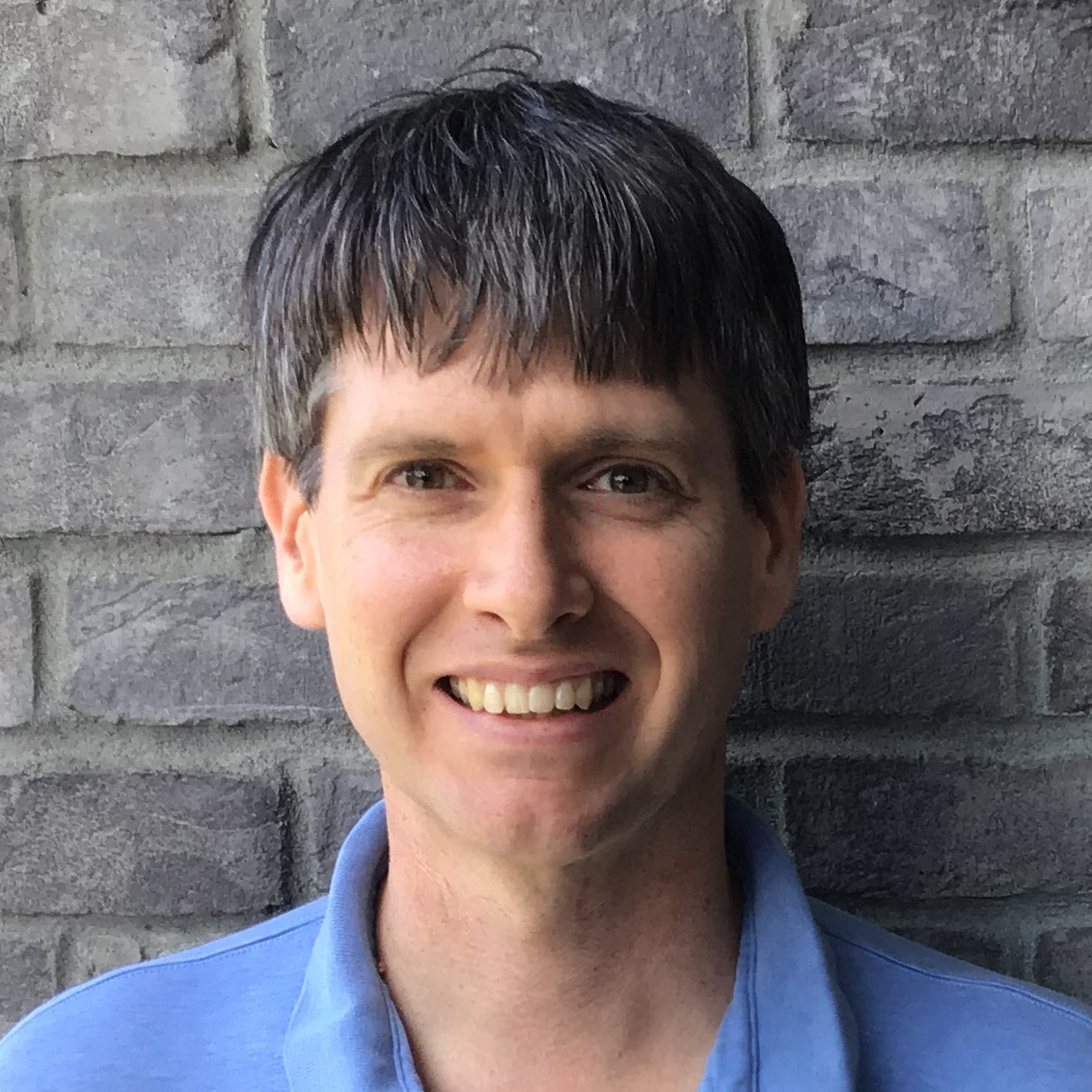
Matthew Tiscareno
Dr. Matthew S. Tiscareno is a Senior Research Scientist at the SETI Institute in Mountain View CA. As part of the JWST GTO team, he leads a set of observations to search for new moons at Saturn and to measure the composition of selected small moons of Saturn. He received his undergraduate degree from Caltech and his Ph.D. from the University of Arizona. Dr. Tiscareno studies planetary rings and orbital dynamics throughout the solar system. He was a Cassini Imaging Team Associate and Participating Scientist, in which role he helped to plan Cassini Imaging observations of Saturn’s rings and led discoveries including “propeller” moonlets embedded in the rings and impact ejecta clouds rising above the rings. He is currently the manager of the Ring-Moon Systems Node, which is part of NASA’s Planetary Data System (PDS). He also directs the SETI Institute site of NSF’s Research Experience for Undergraduates (REU) program.
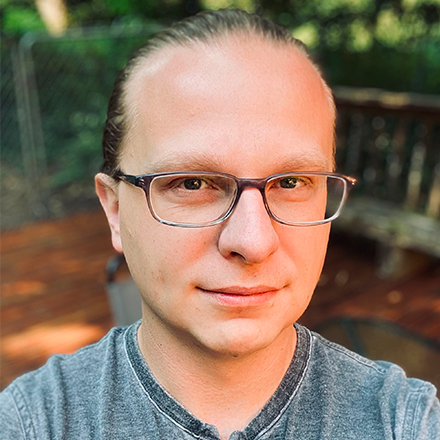
Alex Parker
Dr. Parker is an expert in observational, theoretical, statistical, and instrumentation methodologies for exploring the origin and history of the solar system, with a particular focus on its minor planet populations. His publication record includes research on asteroid family physical characteristics, Kuiper Belt dynamics, the properties of the Pluto system as seen by New Horizons, computational optimization techniques for minor planet discovery, statistical methodologies for characterizing the lunar cratering history, and more. Since his PhD work on the characteristics of Kuiper Belt binary systems and their implications for the origin and evolution of the outer solar system, Dr. Parker has been engaged in efforts to enhance and enable planetary exploration. He surveyed the Kuiper Belt for a post-Pluto target for the New Horizons mission (leading to co-discovery of the extended mission target Arrokoth). He conducted the astrodynamics analyses to determine targetability of extended mission targets, developed the mission case for long-range Kuiper Belt Object observations from New Horizons, and is now a Co-Investigator on the New Horizons Extended Mission. He is now PI of the largest-ever solar system program on the Hubble Space Telescope, the Solar System Origins Legacy Survey, and he directs a NASA SSERVI node for exploration technology development, Project ESPRESSO.
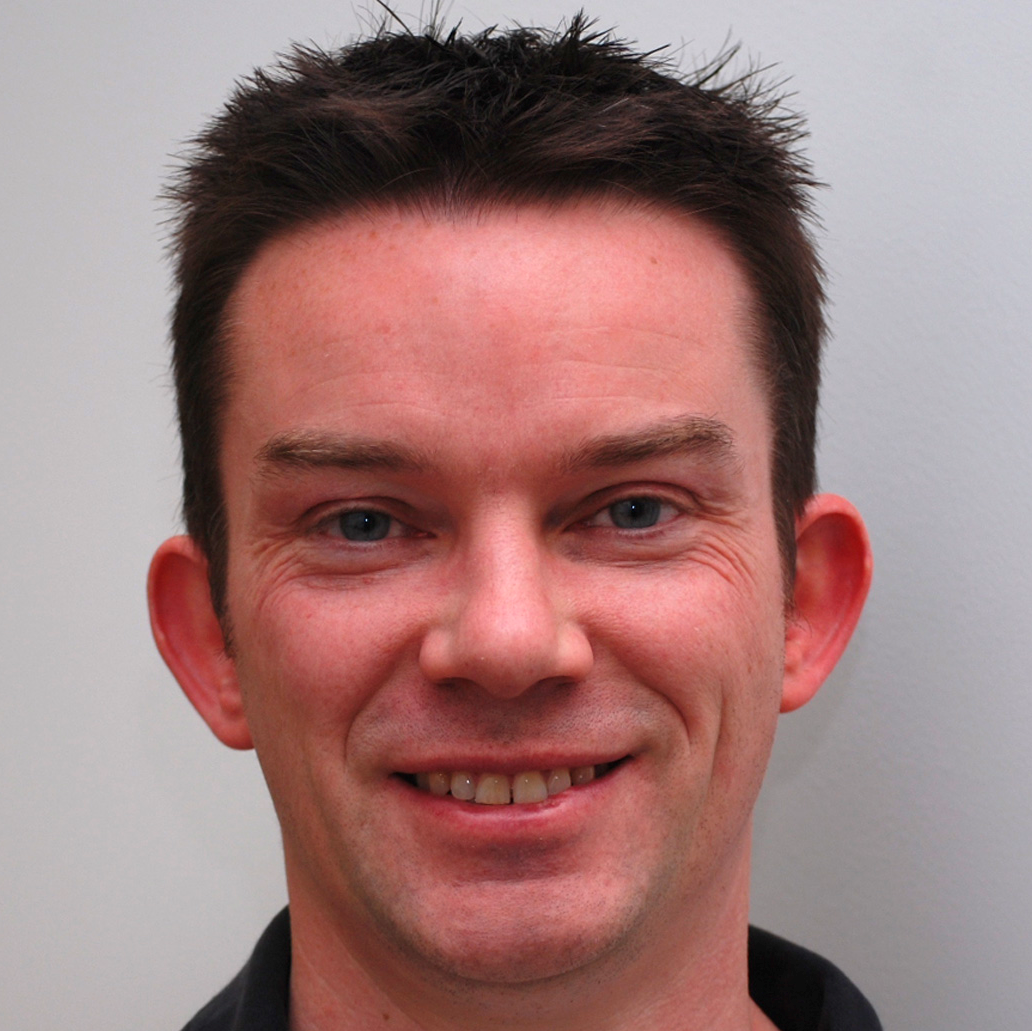
Conor Nixon
I am an astronomer and planetary scientist working in the Planetary Systems Laboratory at NASA Goddard Space Flight Center, where I am currently the Associate Laboratory Chief. I previously served as Deputy Principal Investigator on the Cassini Composite Infrared Spectrometer (CIRS). My research is focused primarily on planetary atmospheres, especially the outer planets and Titan. I am keenly interested in astrochemistry and the potential for life in the solar system and elsewhere. I also work on technologies for remote sensing, spectroscopy and other mission and instrumentation development. I grew up and studied in the UK prior to coming to the US, earning a BA in Natural Science from the University of Cambridge, an MSc in Radio Astronomy from the University of Manchester, and a DPhil from the University of Oxford in Remote Sensing of the Atmosphere of Titan.
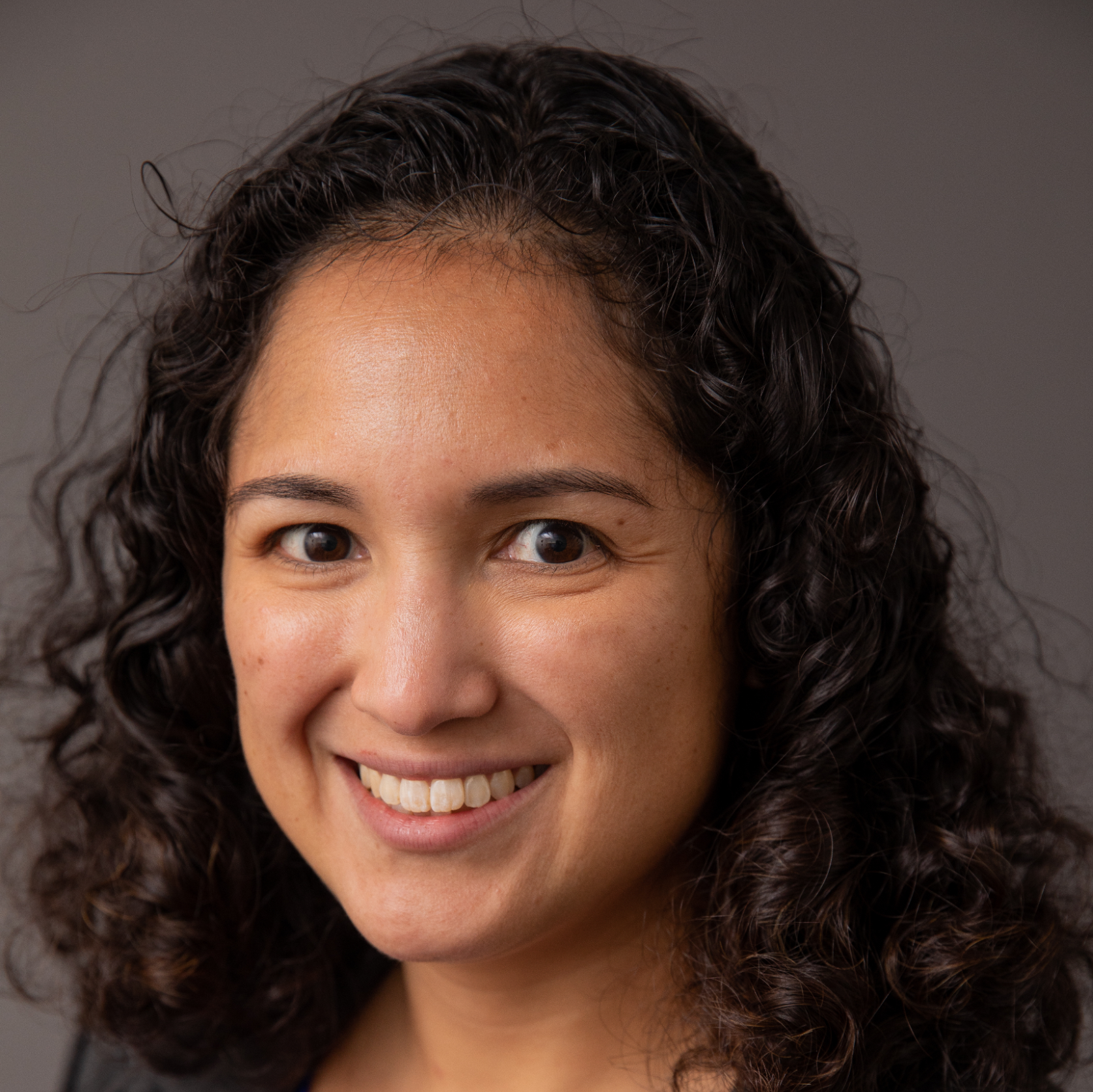
Cristina Thomas
Dr. Cristina A Thomas is an assistant professor at Northern Arizona University. She leads the guaranteed time observations of near-Earth objects Phaethon and Didymos. She received her undergraduate degree at Caltech and her Ph.D from MIT. She studies the physical properties of asteroids using ground and space-based telescopes in a wide variety of wavelengths. She has linked asteroids to potential meteorite analogs and investigated space weathering trends in asteroid families. She leads the NASA DART mission’s Observations Working Group and the MITHNEOS (MIT-Hawaii Near-Earth Object Spectroscopic Survey).
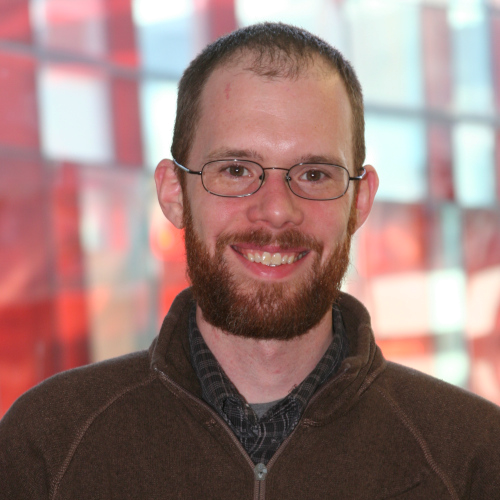
Mike Kelley
Dr. Michael S. P. Kelley will be studying comets with the James Webb Space Telescope, especially to characterize their dust and gas compositions. He received his undergraduate degree from Iowa State University, and Ph.D. from the University of Minnesota. He is currently an Associate Research Scientist in the Department of Astronomy at the University of Maryland. Dr. Kelley has focused his research on the properties of small solar system objects, but especially on those with cometary activity. His goals are to better understand cometary origins through telescopic observations, and to study how comets and other small objects may have changed over the 4.6 billion years since our solar system formed.
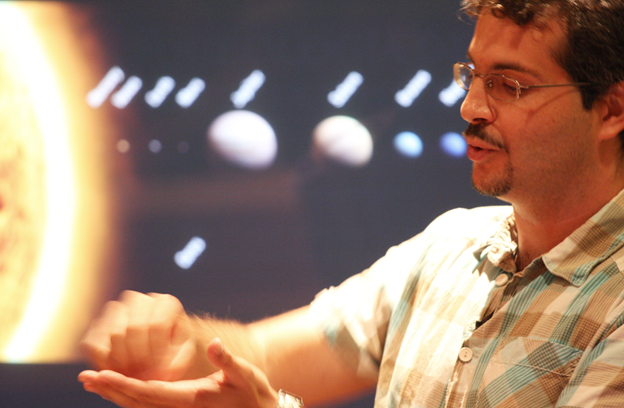
Pablo Santos Sanz
Dr. Pablo Santos-Sanz is a Planetary Scientist working at the Astrophysical Institute of Andalucía (IAA) in Granada, Spain. The IAA belongs to the Spanish National Research Council (CSIC). He received his undergraduate degree from the University of Valladolid (Spain) and his Ph.D. from the IAA-CSIC and the University of Granada. Dr. Santos-Sanz studies Solar System minor bodies and dwarf planets, primarily the outer icy bodies called trans-Neptunian objects (TNOs) and Centaurs. He characterizes these bodies by measuring their thermal emission and through stellar occultations. To perform these studies he uses ground-based optical telescopes and radio-telescopes (like ALMA or others), and also space-based telescopes (like Spitzer, Herschel, or other facilities). He has been recognized for his scientific merits by CSIC and by the Spanish and French Astronomical Societies. Asteroid "1981 EV46" was renamed (9288) Santos-Sanz in his honor.
The Astrophysical Institute of Andalucía (IAA)The Spanish National Research Council (CSIC)
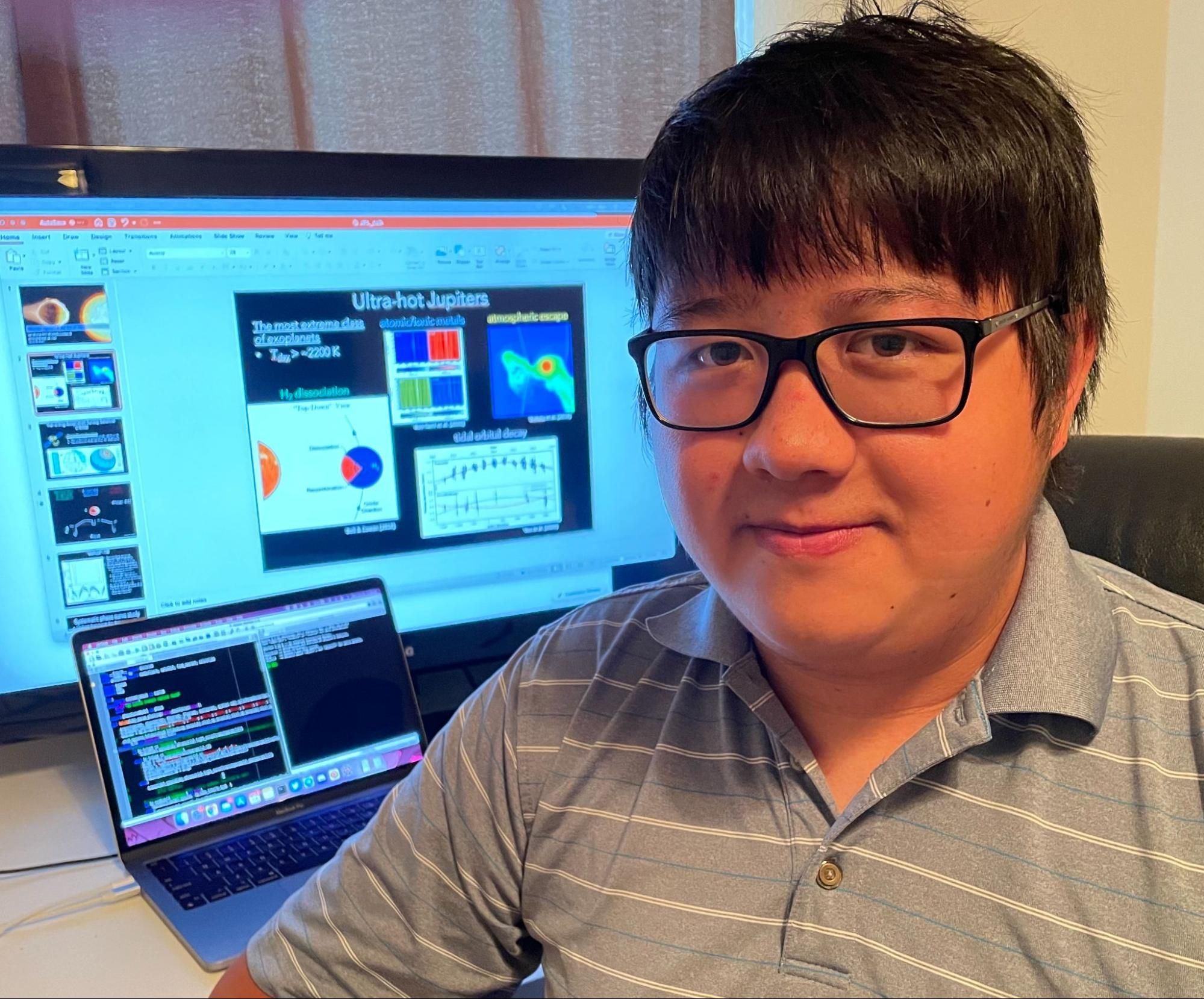
Ian Wong
Ian Wong is an NPP Fellow at NASA GSFC in Dr. Stefanie Milam’s group. His research interests include detailed observational studies of small bodies in the middle and outer Solar System, such as Jupiter Trojans, Hildas, and Kuiper belt objects, as well as atmospheric characterization of exoplanets using phase curves, secondary eclipses, and transmission spectroscopy. Born and raised in Irvine, California, Ian Wong received a B.A. in Linguistics in 2012 from Princeton University and a PhD in Planetary Science at Caltech. As part of Prof. Michael Brown’s group at Caltech, he embarked on a wide-ranging study of icy minor bodies in the middle and outer Solar System, including photometric and spectroscopic characterization of Jupiter Trojans, Hildas, and small Kuiper Belt objects. In addition, he also worked on atmospheric characterization of gas giant exoplanets with Prof. Heather Knutson, with a focus on secondary eclipse and phase curve photometry from the Spitzer Space Telescope and transmission spectroscopy using data from the Hubble Space Telescope. After defending his PhD thesis in 2018, Ian began a three-year stint at MIT as a 51 Pegasi b Postdoctoral Fellow under the supervision of Prof. Richard Binzel. During his time at MIT, his research continued to straddle both solar system science and exoplanet astronomy. He has contributed to ground- and space-based characterization of Jupiter Trojans in support of the upcoming Lucy mission and carried out photometric studies of active Centaurs. Using photometry from the Transiting Exoplanet Survey Satellite (TESS), he has embarked on a systematic multiyear study of visible-light exoplanet phase curves, while simultaneously pursuing new exoplanet discoveries. As an affiliate to the JWST science team, Ian will leverage the unique capabilities of JWST to carry out exciting science through both GTO and GO programs, including intensive spectroscopic analyses of comets and Jupiter Trojans, as well as exoplanet studies.
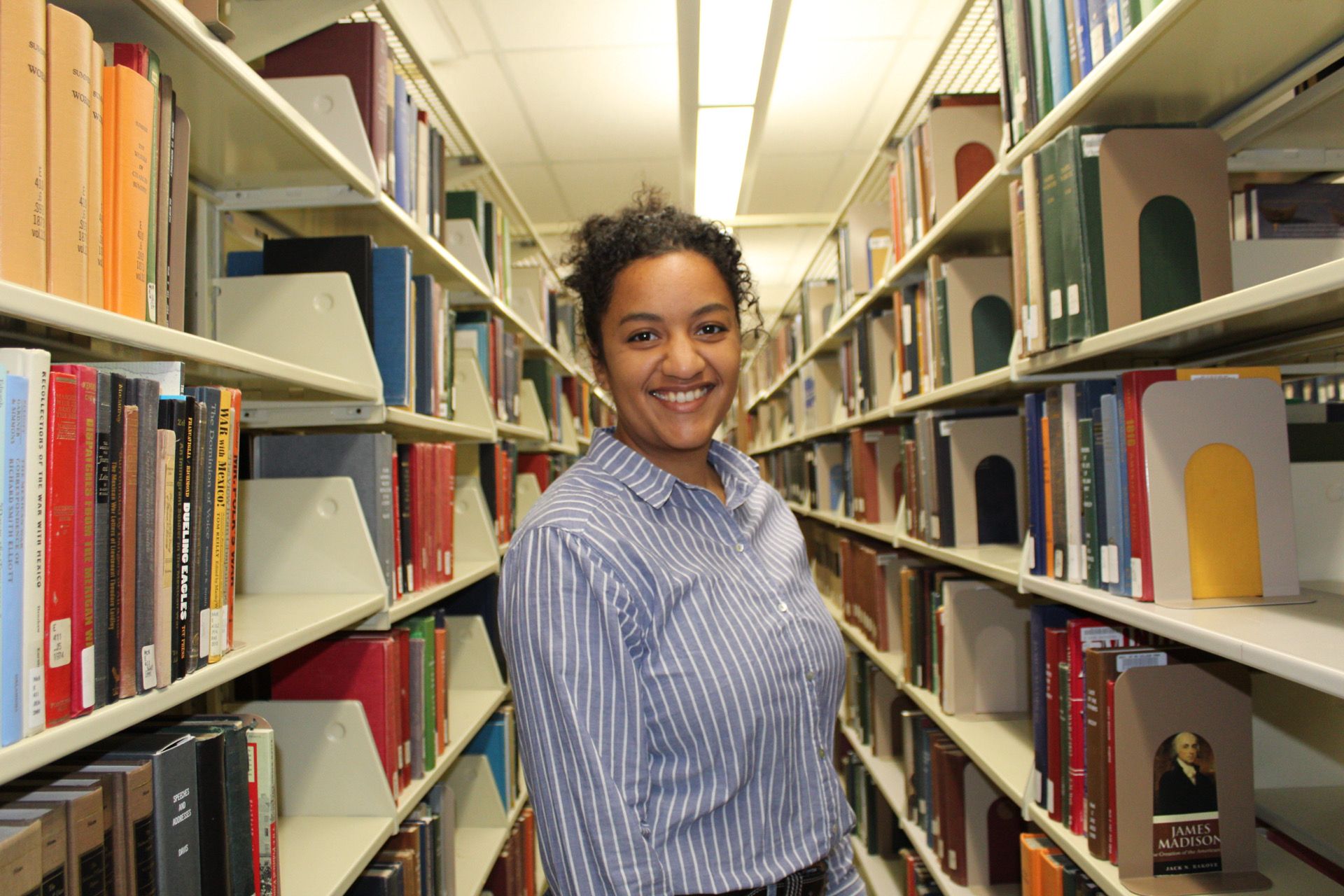
Naomi Rowe-Gurney
Dr. Naomi Rowe-Gurney is a JWST GTO postdoctoral research associate at the NASA Goddard Space Flight Center employed by Howard University. She is a solar system ambassador for the JWST working with Dr Stefanie Milam and Dr Heidi Hammel. She obtained her PhD in 2021 from the University of Leicester working with supervisor Dr Leigh Fletcher. Her thesis used archived data from the Spitzer Space Telescope to study the thermal structure and composition of the middle atmospheres of the ice giants, Uranus and Neptune. She used the retrieval algorithm NEMESIS and built a consistent retrieval framework for the ice giant planets ahead of the launch of the JWST. Throughout the PhD, Naomi used her teaching experience to partake in significant outreach and public engagement work. Naomi also engaged in considerable equality, diversity and inclusion work and was an active member of university committees, as well as promoting science to underrepresented groups. The majority of the engagement work she focused on was for the JWST and promoting its use for looking at our own solar system, especially the giant planets.
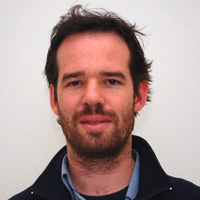
Martin Cordiner
Dr. Martin Cordiner is a Research Associate Professor at the Department of Physics, Catholic University of America. He works as a full-time researcher in astrochemistry and planetary science at the NASA Goddard Space Flight Center in Greenbelt, Maryland. Dr. Cordiner's research aims to understand the chemistry and physics of solar system bodies, interstellar clouds and circumstellar environments, using a combination of ground and space-based observations, combined with detailed computer simulations. By studying the origin and evolution of complex organic molecules as matter passes from interstellar clouds to circumstellar disks and planetary surfaces, Dr. Cordiner's research constitutes part of NASA's ongoing effort to understand the chemical conditions that could lead to life in the universe.
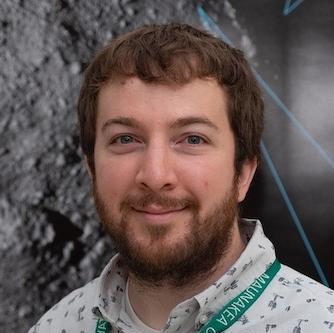
Nathan Roth
Dr. Nathan Roth is a Research Associate in the Department of Physics, Catholic University of America. He works full-time in the Astrochemistry Laboratory at the NASA Goddard Space Flight Center. He received his Ph.D. from the University of Missouri and is an expert in near-infrared spectroscopy and millimeter-wave interferometry of small bodies, including cometary atmospheres. He is PI for JWST Cycle 1 GO Program 1897, which will trace the heritage of refractory organics in comets.
